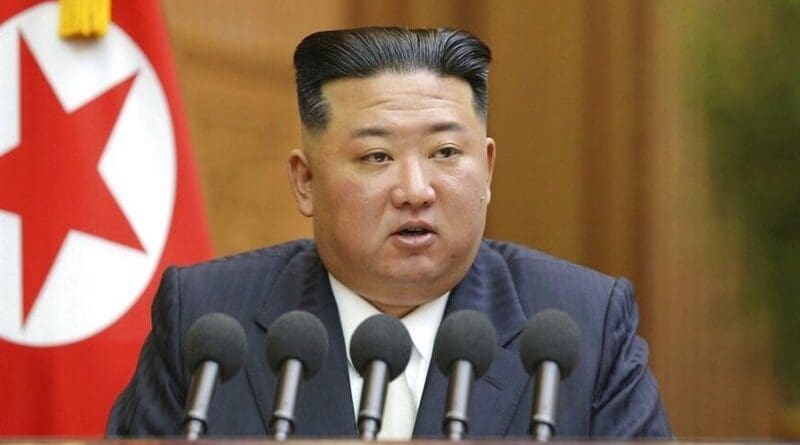SEOUL – The mood in the North Korean port city where a warship launch went badly wrong last week is grim, local residents say, as authorities make arrests and officials scramble to find ways to salvage the 5,000-ton vessel.
North Korean state media has reported that several senior officials have been detained, including Hong Kil Ho, the manager of the Chongjin Shipyard, and Ri Hyong Son, a senior military industry official in the ruling Workers’ Party.
The May 21 launch was meant to be a signature event for supreme leader Kim Jong Un, signaling North Korea progress toward building a blue water navy.
He was presiding over the launch when the ship tipped sideways after an attempted “side launch” from the dock side that left one side of the hull submerged. Just a day later, state media reported his angry reaction: calling it a “grave and unacceptable accident” and a “serious criminal act.”
“People are stunned that the government acknowledged the failure so openly,” a resident of North Hamgyong province, where Chongjin is located, told RFA. Like all the sources in this story, the resident spoke on condition of anonymity for safety reasons.
A source from Chongjin said: “The whole city feels like it’s in mourning.”
North Korea’s opaque and often brutal political system only adds to the tension. Residents now fear that those involved—engineers, managers, and possibly even their families—may face severe punishment.
“People worry that this will lead to a purge,” a second source from North Hamgyong province said. “Kim takes failure personally, especially when it undermines his image.”
Reasons for failure
The shipyard was once known for building ships like the 9,500-ton Mangyongbong-92, a cargo and passenger ferry which launched in 1971. But it has not launched large-scale vessels like that in decades, according to local sources. During Kim Jong Un’s rule, the yard had pivoted toward production of military assets like submarines and torpedo craft.
“The shipyard used to be capable of building cargo ships before economic collapse in 1990s,” the Chongjin resident said. “But after the economic collapse, they haven’t built larger ships. With the retirement of older engineers, additionally the new generation lacks the experience for this kind of operation.”
Following the accident, the damaged warship was covered with blue tarpaulin, visible in satellite images. The residents say attempts to recover the vessel have been slow, hindered by poor infrastructure and a lack of proper equipment.
“There are no large cranes at the shipyard that can lift a vessel of this size,” the first source from North Hamgyong said. “They might use sea cranes, but the approach route through sea to the dock is too narrow and shallow for those to operate easily.”
“It is possible to use crane ships (floating cranes), but the shipyard dock where the vessel has capsized is too narrow, making it extremely difficult to deploy multiple crane ships,” the source added. “Another problem is that the dock is not directly connected to open waters — it lies deep inland and can only be accessed through a narrow channel, which makes it challenging to bring in large crane ships to the site.”
Using balloons?
Satellite imagery appears to show that North Korea is attempting to raise the destroyer into an upright position by attaching numerous balloons to it, according to a U.S. expert.
Decker Eveleth, an imagery analyst at the Center for Naval Analyses, a nonprofit organization based in Washington, D.C., likened it to a scene from a popular animated movie.
“North Korea appears to be attempting to lift up their destroyer with methods inspired by Pixar’s hit 2009 film Up. Note the numerous balloons in the air above the destroyer,” he wrote in a post on X featuring a May 25 satellite image from Maxar.
In “Up,” an elderly man ties vast numbers of balloons to his house to fly it to a South American wilderness.
Translated and additional reporting by Jaewoo Park. Edited by Sungwon Yang and Mat Pennington.




